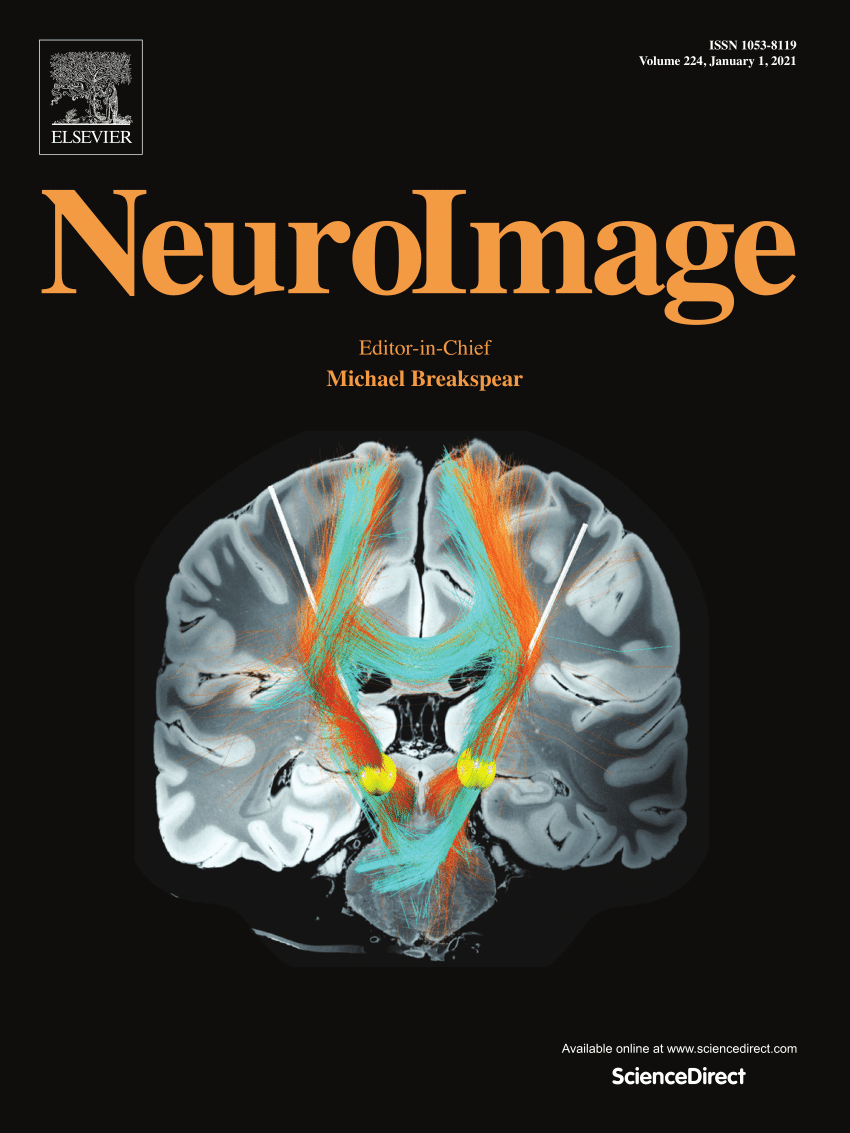Cardiovascular risk in childhood and young adulthood is associated with the hemodynamic response function in midlife: The Bogalusa Heart Study
IF 4.7
2区 医学
Q1 NEUROIMAGING
引用次数: 0
Abstract
Background
In functional MRI, a hemodynamic response function (HRF) describes how neural events are translated into a blood oxygenation response detected through imaging. The HRF has the potential to quantify neurovascular mechanisms by which cardiovascular risks modify brain health, but relationships among HRF characteristics, brain health, and cardiovascular modifiers of brain health have not been well studied to date.
Methods
One hundred and thirty-seven middle-aged participants (mean age: 53.6 ± 4.7, female (62 %), 78 % White American participants and 22 % African American participants) in the exploratory analysis from Bogalusa Heart Study completed clinical evaluations from childhood to midlife and an adaptive Stroop task during fMRI in midlife. The HRFs of each participant within seventeen brain regions of interest (ROIs) previously identified as activated by this task were calculated using a convolutional neural network approach. Faster and more efficient neurovascular functioning was characterized in terms of five HRF characteristics: faster time to peak (TTP), shorter full width at half maximum (FWHM), smaller peak magnitude (PM), smaller trough magnitude (TM), and smaller area under the HRF curve (AUHRF). The composite HRF summary characteristics over all ROIs were calculated for multivariable and simple linear regression analyses.
Results
In multivariable models, faster and more efficient HRF characteristic was found in non-smoker compared to smokers (AUHRF, p = 0.029). Faster and more efficient HRF characteristics were associated with lower systolic and diastolic blood pressures (FWHM, TM, and AUHRF, p = 0.030, 0.042, and 0.032) and cerebral amyloid burden (FWHM, p-value = 0.027) in midlife; as well as greater response rate on the Stroop task (FWHM, p = 0.042) in midlife. In simple linear regression models, faster and more efficient HRF characteristics were found in women compared to men (TM, p = 0.019); in White American participants compared to African American participants (AUHRF, p = 0.044); and in non-smokers compared to smokers (TTP and AUHRF, p = 0.019 and 0.010). Faster and more efficient HRF characteristics were associated with lower systolic and diastolic blood pressures (FWHM and TM, p = 0.019 and 0.029), and lower BMI (FWHM and AUHRF, p = 0.025 and 0.017), in childhood and adolescence; and lower BMI (TTP, p = 0.049), cerebral amyloid burden (FWHM, p = 0.002), and white matter hyperintensity burden (FWHM, p = 0.046) in midlife; as well as greater accuracy on the Stroop task (AUHRF, p = 0.037) in midlife.
Conclusions
In a diverse middle-aged community sample, HRF-based indicators of faster and more efficient neurovascular functioning were associated with better brain health and cognitive function, as well as better lifespan cardiovascular health.
Bogalusa心脏研究:儿童和青年期心血管风险与中年血流动力学反应功能相关
背景:在功能性MRI中,血流动力学反应函数(HRF)描述了神经事件如何转化为通过成像检测到的血氧反应。HRF有可能量化心血管风险改变脑健康的神经血管机制,但迄今为止,HRF特征、脑健康和脑健康的心血管调节剂之间的关系尚未得到很好的研究。方法:Bogalusa心脏研究的137名中年参与者(平均年龄:53.6±4.7岁,女性(62%),美国白人参与者78%,非洲裔美国人22%)完成了从童年到中年的临床评估和中年fMRI的适应性Stroop任务。每个参与者的17个感兴趣的大脑区域(roi)的hrf先前被确定为由该任务激活,使用卷积神经网络方法计算。更快和更有效的神经血管功能表现为五个HRF特征:更快的峰值时间(TTP),更短的半峰值全宽度(FWHM),更小的峰值幅度(PM),更小的波谷幅度(TM)和更小的HRF曲线下面积(AUHRF)。对所有roi的复合HRF汇总特征进行了多变量和简单线性回归分析。结果:在多变量模型中,非吸烟者的HRF特征比吸烟者更快、更有效(AUHRF, p = 0.029)。更快和更有效的HRF特征与中年时较低的收缩压和舒张压(FWHM、TM和AUHRF, p = 0.030、0.042和0.032)和脑淀粉样蛋白负荷(FWHM, p值 = 0.027)相关;中年时Stroop任务的反应率更高(p = 0.042)。在简单线性回归模型中,女性的HRF特征比男性更快、更有效(TM, p = 0.019);美国白人受试者与非洲裔受试者相比(AUHRF, p = 0.044);非吸烟者与吸烟者比较(TTP和AUHRF, p = 0.019和0.010)。更快和更有效的HRF特征与儿童期和青春期较低的收缩压和舒张压(FWHM和TM, p = 0.019和0.029)和较低的BMI (FWHM和AUHRF, p = 0.025和0.017)相关;中年BMI (TTP, p = 0.049)、脑淀粉样蛋白负荷(FWHM, p = 0.002)、白质高负荷(FWHM, p = 0.046)较低;以及中年时Stroop任务的更高准确性(AUHRF, p = 0.037)。结论:在不同的中年社区样本中,基于hrf的更快和更有效的神经血管功能指标与更好的大脑健康和认知功能以及更好的寿命心血管健康相关。
本文章由计算机程序翻译,如有差异,请以英文原文为准。
求助全文
约1分钟内获得全文
求助全文
来源期刊

NeuroImage
医学-核医学
CiteScore
11.30
自引率
10.50%
发文量
809
审稿时长
63 days
期刊介绍:
NeuroImage, a Journal of Brain Function provides a vehicle for communicating important advances in acquiring, analyzing, and modelling neuroimaging data and in applying these techniques to the study of structure-function and brain-behavior relationships. Though the emphasis is on the macroscopic level of human brain organization, meso-and microscopic neuroimaging across all species will be considered if informative for understanding the aforementioned relationships.
 求助内容:
求助内容: 应助结果提醒方式:
应助结果提醒方式:


